#philippine mystical creatures
Explore tagged Tumblr posts
Text

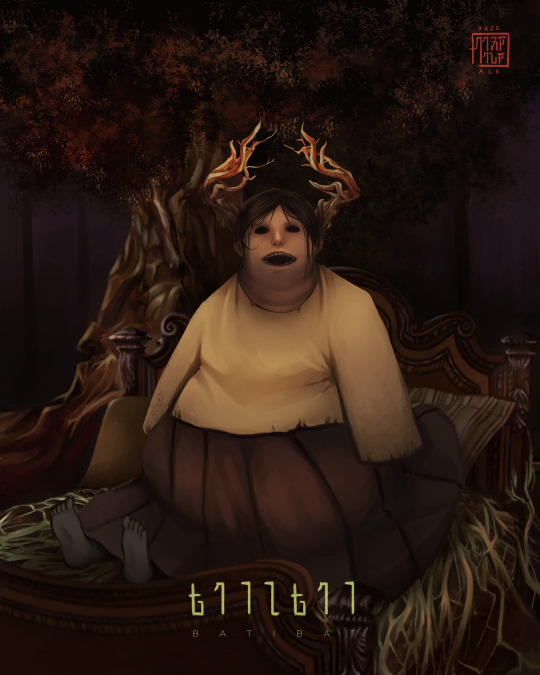
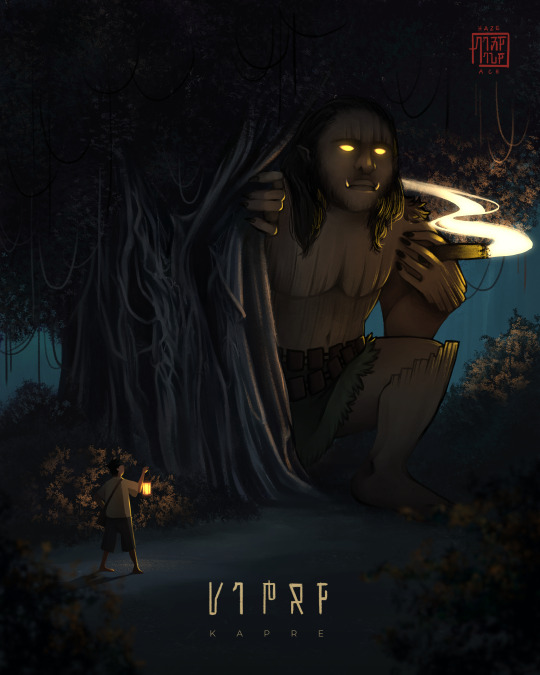
Made these years ago for #Engkantober but only managed to do 3 lmao
#art#hazeace#illustration#digital art#drawing#Santelmo#Batiba#Kapre#philippine folklore#philippine mystical creatures
14 notes
·
View notes
Text
ONLINE RESOURCES (for Filipino witches) - by bruja-engkantada
Buying books related to witchcraft, folk magick practice, and tarot might be difficult for Ph-based practitioners because of the following:
Limited budget
Other people might see the physical books
Here are some resources and individuals that helped me delve deeper into my craft. Please do remember that it is important to not only have these resources at hand, but also to consume them, learn from them, and apply what you learned or what resonates with you. What we are doing is a "practice" after all.
I'm still trying to learn tumblr, so I don't know how to link yet, or if multiple links are allowed in a post on this platform. I will edit and add links once I figure it out.
TOPIC: ALBULARYOS & FAITH HEALERS
Interviews by Off the Record (YT) - these interviews are in Filipino language
Lihim na Karunungan (FB Group) - this is where you see the the real albularyos and how they work
BhesTV (YT) - this account focuses on medicinal properties of Ph plants and herbs, and also information about the amulets & talismans in the Philippines
TOPIC: PHILIPPINE HISTORY
Nick Joaquin (Filipino Journalist Writer), Ambeth Ocampo (Filipino Historian) and Lualhati Bautista (Filipino author) - research about their books. Their research and studies focus mainly on Ph artifacts, and Ph history during different colonial periods, and also pre-colonial era. You can also follow Ambeth Ocampo on FB or IG.
The Aswang Project (website) - these have blog entries pertaining to esoteric practices, mythical creatures, and urban legends from Ph.
The Pinay Writer (IG) - also here in tumblr. Their content is mostly focused on pre-colonial history of Ph. You can follow them on IG, and other platforms as well.
TOPIC: TAROT AND COMMUNITIES
Rob Rubin Philippine Tarot Authority (FB/IG) - one the tarot pioneers here in Ph. He also practices the craft.
Mysterium Philippines by Rob Rubin - the Intro to Tarot course they have is like the most official here in Ph. They do offer other courses aside from tarot studies, so check their page out.
Mysterium after Dark by Rob Rubin - a Spotify Podcast about Tarot
FB Groups/Pages - Tarot Philippines Community, Project Tarot: Filipino Tarot Community, Soluna Esoterica Ph
Legitimate Ph Tarot Shops (IG/Shopee) - LunaBrujeria, ArtemisPaints, Shelfscape... National Bookstore and Fully Booked also sell some Tarot Decks & Book Guides
Joe Monteleone (YT) - Tarot Practitioner and mentor. They have great & easy to understand lessons on learning tarot, they also have free guides on their website. You can follow them and subsribe to their YT.
TOPIC: CONTENT CREATORS (you can find them on different social media platforms)
Witch of Wonderlust (IG) - She is Filipinx descent, so you might resonate with her content. (She's a pole instructor too!)
The Mestizo Mystic (IG) - He is Filipinx descent as well. He is a Santa Muerte Devotee, but he also incorporates Catholicism/Christianity in his practice.
Chaotic Witch Aunt (IG) - they are Italian Folk Practitioner. But since their practice is kind of related to our dominating religion here in Ph, you might resonate with their content as well.
These are some of the free and accessible resources out there, and people who you can follow. I hope I was able to help. Please correct me if there are any wrong or outdated information above.
Books are awesome resources. But while we're trying to save up funds, you can follow these amazing people, join public communities, and learn from free resources. Give thanks and appreciation by following & interacting with their socials.
It is great to learn from experienced and expert individuals, but your practice is unique and your own. I hope you also find the style/type of practice that would best suit you.
7 notes
·
View notes
Note
I'm watching Good Manners(brazilian fantasy movie, so like spoilers ahead) and now I'm thinking of mothers of mystical beings that are affected during the pregnancy, specifically in the way of a human woman, pregnant with a werewolf baby, who is affected by full moon during the pregnancy. The only other example I can think of the classic "human mother of vampire baby having to drink blood during pregnancy and breastfeeding". At least I think it's classic. Toodles.
The concept of a human mother carrying a vampire baby and needing to drink blood because of it, is certainly popular in modern fantasy! In the folklore surrounding dhampir, I've never seen anything about the mothers having to consume blood, which makes sense because dhampir, though half-vampires generally also don't drink blood. (And from a more historical perspective, just because a grieving woman gets pregnant and gives the explanation that her undead husband visited her, does not mean this woman also felt like suddenly drinking blood).
The werewolf take on this has much more potential for body horror though. Which is why I think it's more common to have the werelwolf "curse" take hold when the child is seven or eleven years old. Even if the mother was a werewolf herself, the practicality of transforming your whole body while pregnant and the baby transforming too is pretty horrifying to think about.
There are a lot of folktales about women having babies with selkies, elves, water spirits, etc. But these stories rarely focus on the pregnancy itself. And maybe that's for the best, honestly. Speaking as someone who went through one, normal human pregnancy is plently weird enough.
There is a lot of folkloric superstition about pregnancy ailments. In some places they say you have to indulge your pregnancy cravings, or your child will "bear a sign" of the lack of it. Having a lot of morning sickness is sometimes said to be a sign you will have a particularly beautiful child (maybe as consolation). And of course there are a lot of protective elements around it. Pregnant people were thought to be particularly vulnerable to being stolen by the fae in some places and in tales from the Philippines several vampiric creatures pray on them. I've also come across mentions of a pregnant woman looking a vampire in the eyes marking her baby for vampirism after death, but I've yet to find an actual source for that one...
Regardless, I think adding a little urban fantasy flavour to supernatural pregnancies could be a lot of fun! Mostly in the cravings department. Whether that's blood, meat, fish, magical fruits or forbidden greenery from a witch's garden. That'd be extra fun if you have a polyamorous setup and no one knows whose kid it is yet, until the pregnant person starts to have very specific cravings and they're all like: "Oh, salmon instead of venison this time? Definitely yours then <3"
33 notes
·
View notes
Text





The remote island of Siquijor is unique – not only in the Philippines, but the whole of South East Asia, renowned since ancient times as a centre of witchcraft, magic and folk healing.
Siquijor has the distinction of being the mystical island of the Philippines, a name the province may have earned through numerous tales of supernatural superstitions that originated here. This province has always been at the forefront of conversations when it comes to sorcerers, witches and other mythical creatures that would lure you to their place for you to never come home again.
The reputation of Siquijor as a melting pot of everything that’s creepy has become its calling card, for better or for worse. I didn’t believe any of these stories, especially because I really love traveling to places I haven’t been to.




Our stay in Siquijor started with our stay in this Airbnb. We arrived at night, and did have a hard time looking for this place, only to find out that it is near the port, and only a few minutes away.
We spent 4 days in Siquijor and a day in Dumaguete, which we feel like is plenty of time to see the highlights of the islands. If you are looking to explore places close to where you are staying, and you do not want the responsibility of driving, there are many Tricycles driving around. You can simply flag one down, let them know where you want to go and ask how much. There is no consistency in prices for Tricycles and drivers often make a price up on the spot, so definitely make sure to barter and agree on a price before getting on.










Enormous faith has traditionally been placed in the abilities of the island's healers – so much so that Siquijor is beginning to attract the attention of visitors far beyond the Philippines and the country's diaspora. Siquijodnons, as islanders are known, regularly visit the mananambal instead of a regular doctor. The key part of their treatment is the prescription of homemade herbal medicines. They make all kinds of natural remedies from the 300 or so medicinal plants that grow on the island. The abundance of curative vegetation is likely why folk healing has been so important to island life for centuries.
We did not miss the chance to experience some healing through their "tuob" ritual, a form of fumigation believed to dispel sickness and fend off bad spells. They put a small pot filled with ashes and oil under a stool and lit it. Then, they draped us in a soft yellow blanket, trapping the warmth within. The smoke billowed as it enveloped us. Then, they uncovered us and rubbed us with a healing mixture, kneading our back with a prayer.
I felt like different person after the healing session.
As we left the province, I realized if there was anything supernatural or enchanted about Siquijor, it must be its picturesque gifts from nature. I never encountered any lurking ghost or any scary natural beings. With many people fearing the place, Siquijor may have become one of the best kept secrets in the Philippines as a travel destination for its tranquil tourist spots and hidden gems.
Siquijor is undoubtedly the most enchanting place I’ve been to in my life.
#travel#photographers on tumblr#original photographers#landscape#original photography#iphonography#siquijor
14 notes
·
View notes
Text
City of Whispers: Manila Mysteries
Prologue
In the bustling streets of Manila, where the vibrant chaos of jeepneys and the scent of street food permeate the air, a hidden world unfolds beneath the surface. Amidst the urban sprawl, a series of enigmatic incidents begins to unravel, each one shrouded in the rich tapestry of Filipino folklore and mysticism.
As the city sleeps, a mysterious group known as the "Babaylan Seekers" emerges, seeking to uncover the secrets of ancient rituals hidden within the heart of Manila. Their journey intertwines with modern-day characters – Maria, an ambitious journalist fascinated by the city's folklore, and Mateo, a street artist who unwittingly possesses a connection to an otherworldly power.
The story unravels in the historic districts of Intramuros and the vibrant markets of Quiapo, where the Seekers and our protagonists unearth long-buried artifacts that hold the key to unlocking a portal between the spiritual and earthly realms. With every discovery, they come face-to-face with mythical creatures and ancient spirits, each guarding a fragment of the city's forgotten past.
As Manila becomes a battleground between the supernatural and the mundane, Maria and Mateo must navigate a world where folklore comes alive. They delve into the depths of hidden catacombs, decipher cryptic messages, and form alliances with elemental guardians to unravel the mysteries that bind their fate to the city.
"City of Whispers: Manila Mysteries" is a thrilling tale that blends the urban vibrancy of Manila with the enchanting folklore of the Philippines, creating a setting where tradition and modernity collide in a symphony of mystery and magic.
0 notes
Text
In terms of hunting down cryptids, I'm all down for it in terms of being able to document them without getting my head eaten off literally. I recommend "Lost Journal of Alejandro Pardo" which is a cryptozoology guidebook to Philippine monsters and mythos. I remember borrowing this book in highschool from the Filipiniana section and maybe spooking myself a bit despite not having my third eye open. (Yes...the drawings were that scary for highschooler me... and the latest TADC episode still manage to scare me despite now being an adult)
Also, despite some minor...landmines to say, Trese is a good series that tackles the mythology side of a country that has been heavily influenced by Catholicism.
(For the sake of those with colorful imaginations like mine, I will put a "Keep Reading" tab so that we don't accidentally get ourselves haunted by our own minds towards the unexplainable. Then again...who am I to stop the curious like how I dove headfirst to borrowing that book?)
Most creatures in the book are those not heard of due to possibly being from other regions.
Some of these monsters piqued my interest like that of this leafy creature that is said to captain a mystical boat, though you have to do some odd technique to be able to see it and its ship. The way you find it is by finding a tree that is surrounded by fireflies. I don't remember the name of the creature but I did wrote it down in a story that I long scrapped.
Another one is a supposed sleep paralysis demon in the form of a (for descriptive purposes only) large obese lady. The book said that they are a nature spirit of sorts that inhabit trees and apparently they appear when their tree was taken down to be made into a bed. Depending on their request, they would ask either that a part of the bed be returned to where their tree was or that the entire bed must be returned to the woods. I also forgot the name of this monster but it did scare me shitless to say the least.
There's also the sigbin, a corpse eating dog. In Trese, they are depicted as shapeshifters. Though in the guidebook, they are depicted as these otherworldly dogs that feast on corpses. Sometimes, they are used to track down corpses that have been casted away.
Of course, there's also the engkantos aka the local version of the English's faeries (or whatever their spelling is). There are multiple mythologies pertaining to the realm of the engkantos, one of which is the famous "City of Biringan", a technologically-advance utopia where engkantos live. Though there are other stories that pertain of people managing to get to the realm of the engkantos and being offered food. Even here, the rule of thumb is to never eat what they offer and find a way to outsmart them. Often times these engkantos would wear colonial outfits, like the baro't saya and barong tagalog, and look like forever youths. Though according to the guidebook, once you fall for their trap, they shed their illusion and reveal their true form which often looks like that of a rotting corpse. Of course, variations vary from one another due to the regional diversity of the country.
There are monsters such as the allan (idk how it's spelled but funnily enough it sounds like a normal person's name) which is a bat human that feasts on humans... and then a snake-lady called an oryol that is said to seduce men. Though I think the latter is maybe due to colonial influence and woven what may be the Western-Christian telling of Lilith to be localized.
And of course...there are those creatures that rape men and women alike. Or, at least, desire to "have" (marry) the human. There are cases where nature spirits like that of the kapre have shown interests in humans. A Sunday evening show I watch, Kapuso Mo: Jessica Soho, sometimes feature segments pertaining to the supernatural. I always look forward to those segments so I can debunk them (and scare) myself.
[Again, I do not have a third eye, but sometimes I can "feel" when something's off. Though the "third eye" does run in the family, just lucky enough that I did not inherit it... But that means I get thrown to take the fall to make things less scarier for everyone. Hhh...that one time when we were given an amulet (tiny ziplock) with a pinch of salt, a clove of garlic, what I assume is a part of a palm plant used for Palm Sunday, and an amulet of the Holy Family did not ease any of us at all! Additionally, I WOULD LIKE TO TALK TO THE INTERIOR DESIGNER THAT DECIDED FILLING UP THE ENTIRE WALL WITH CLOSET DOORS. WHAT KIND OF DESIGN IS THAT?! AT LEAST PLACE A VANITY OR OPEN SHELF CONCEPT. NEXT THING YOU KNOW YOU'VE GOT A BUNCH OF KIDS GETTING SCARED OF GOING UP IN FEAR THAT AN ASWANG OR TIKBALANG OR A GHOST WILL JUMP OUT AT THEM IN THE MIDDLE OF THE NIGHT. IT DOESN'T EVEN HELP THAT OUR PHONES WERE CONFISCATED SO THERE GOES ANY SENSE OF REASSURANCE! DOESN'T EVEN HELP AGAIN THAT I CAN'T EVEN USE IT TO CHECK THE TIME! I decided on just flipping off whatever forces there are because I was too sleepy of dealing with the paranormal at 5 am in the morning.]
I also find it interesting, to say the least, the possible origins of the tiyanak; a vampiric creature that takes the form of a baby. The well known variation is that they are spawned from babies that 1) were aborted 2) died before being baptized. It's most likely the well known variation is spun from the use of local beliefs by colonizers to get locals to convert to Catholicism and have their babies baptized so that they have a chance to go to heaven. In addition, it also solidifies the belief of "abortion = bad" though that itself is where politics and religion start to intermingle with one another and I'd rather not go down that route. I do believe, however, that the possible original lore of the tiyanak is that it is a changeling creature that decidedly takes form of a baby to prey on unsuspecting kind hearted humans. The only way to get out of it varies as well as one either inverts their shirt to get out, or, on off chance face-to-face 1v1 encounter with the demon, invert your shirt and start making silly faces to get it to laugh (yk...like how babies work).
As much as I would like to hunt down and prove or disprove the existence of these monsters, I'd need a bolo blessed by a priest to calm any nerves I have.
All in all, there are a lot more monsters here and it all goes down to how much people remember. I would also like to say how terrified I am right now after remembering the contents of the book because of how much the illustrations are burned into my brain... All I can hope now is that I do not get haunted in my sleep.
Cryptid hunting cryptidcore is so America and England focused... Where’s my Australian cryptid hunters, my Eastern European ghost hunters, my Asian cryptozoology nerds?!? Where y’all are, I’d be interested to hear about local legends and cryptids that are not from England or America (though I’m still interested in those). Hit me up if you have any lesser-known local myths, legands, and cryptids.
22 notes
·
View notes
Photo
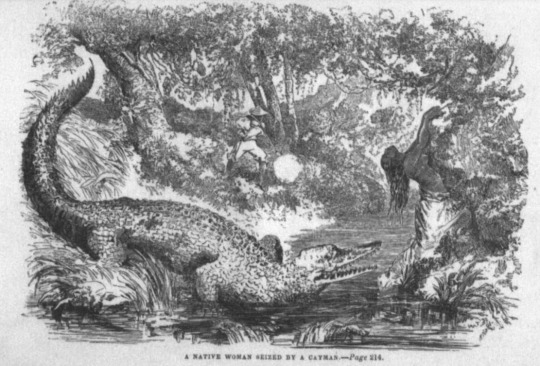
The crocodile spirit of Mimaropa [Filipino mythology]
Mount Tebulian, which is located in Mimaropa, in the Philippines, is supposedly home to an ancient spirit. According to local folktales, as collected by Ethelbert Forbes Sketchley, a spirit has dwelled on this mountain for countless ages.
The being takes the shape of a very large crocodile, but its scales are made from diamond. It has no name that I know of, but when an earthquake happens this is said to be the doing of the crocodile spirit, who hits the top of the mountain to make the earth shake when the people offend it.
When the spirit breaks through earth and rocks, some of these diamond shards break off and fall to the ground. They are commonly collected by people.
Sketchley claimed that people had brought him some of these supposed diamonds, but he had them identified and they turned out to be quartz. Nevertheless, the diamonds on the creature’s scales are intended as gifts for people who are pure of heart. Anyone who has offended the spirit will die a sudden and gruesome death when they attempt to collect these gems.
Crocodiles have a very ambiguous place in traditional Philippine culture. On one hand, they are usually viewed in a decidedly negative light. They are often used in cartoons as metaphors for nepotism and corruption (for example, a political cartoon portraying a politician as a greedy crocodile). This is probably because crocodiles have always been a danger for both the indigenous people and their livestock. But on the other hand, indigenous Philippine communities used to associate (and still do, in some areas) these animals with fertility, their ancestors and mysticism. In the local creation myth of the Mindanao people, for example, humans descended from crocodiles. In some areas, crocodiles were symbols of power and sexuality, and great leaders from history were symbolically depicted as crocodiles.
Sources: Sketchley, E., 1896, Cagayan Sulu, its customs, legends and superstitions, Journal of the Asiatic Society of Bengal, 65, 47-57. Van Der Ploeg, J., Van Weerd, M. and Persoon, G. A., 2011, A cultural history of crocodiles in the Philippines: Towards a new peace pact?, Environment and History, 17(2), 229-264. (image source: image from Valentin, H., 1854, Twenty years in the Philippines (1819-1839), image depicts a native woman being attacked by a crocodile)
50 notes
·
View notes
Text


The Legend of El Chupacabra
El chupacabra, or just chupacabra, is a legendary cryptozoology creature that has been haunting various parts of the globe since an initial sighting in March 1995. The term “chupacabra” is derived from Spanish, with chupar meaning “to suck” and cabra meaning “goat.” The creature gained this dark, mystical name from the initial reports from Puerto Rico in 1995. In March and August 1995, attacks on more than 150 farm animals left officials dumbfounded. Eyewitness accounts, published in local newspapers, spoke of a creature with a “reptilian body, oval head, bulging red eyes, fanged teeth and long, darting tongue.” The farm animals in Puerto Rico were found to be drained of blood with puncture wounds in the neck. No meat was taken from the animals’ bodies.
The situation in Puerto Rico reached such a fever pitch that Mayor Jose Soto recruited volunteers to hunt the creature weekly for nearly a year, with no success. It’s important at this point to make a distinction. When chupacabras are reported, they usually fall into one of two categories. First, and most common to the Puerto Rico incidents, is a chupacabra that is reptile-like in nature with leathery greenish-gray skin and spines running down the spine of the back. The monster can be approximately three to four feet tall and is a bipedal – standing and hopping like a kangaroo.
The second, increasingly common version of the chupacabra is more like a strange breed of wild dog or coyote. This version lacks the hair of a dog, but features the pronounced spinal ridge or “spikes” similar to the reptilian chupacabra. The four-legged, dog-like chupacabra is also known for some fearsome fangs and claws used for training animal’s blood. The “mark” of the chupacabra on the victims is typically one to three holes, and in the shape of an upside-down triangle when three holes are apparent. While the chupacabra or “goat sucker” seems to be a recent cryptozoology finding, the Mayans may have encountered the creature many years ago.
The Chupacabra has inspired many works of art in modern culture, including the 2013 film, Chupacabra vs. the Alamo. The Chupacabra has inspired many works of art in modern culture, including the 2013 film, Chupacabra vs. the Alamo. In Mayan mythology, Camazotz was known as the death bat or vampire bat. Stories reveal a creature with a bat or lizard-like face, two arms and the ability to turn into a statue during the day.
The creature’s sharp snout even lends itself as a device that could suck blood from victims. Even more findings identify terms like “goat sucker” found in Mayan literature as early as 1400 B.C. At Chupamacabre, we love the chupacabra because it’s just a bit different than other creatures of lore. It captures our imagination in new ways. The chupa has been “captured” in various sightings since 1995, and later tested by biologists.
Tests often identify the creatures as mammals with parasitic manges of various types, but can never account for dead or victimized farm animals and livestock in the area. Unlike the Loch Ness Monster and Bigfoot, Chupacabras are “seemingly” found, seen, captured, and still mystify and dumbfound us all. We hope you love the whimsical nature of this cryptobeast as much as we do.
Since those initial sightings in Puerto Rico, chupacabras have gained worldwide appeal and in some case, worldwide sightings. Nearest and dearest to our hearts are sightings in North America, including a rash of sightings recently in Texas and some in Florida. Russia, China, Thailand, the Philippines, and other countries report chupacabra-like sightings or killings of livestock.
#paranormal#ghost and spirits#ghost and hauntings#haunted salem#myhauntedsalem#The Legend of El Chupacabra
9 notes
·
View notes
Text
people of color in arthurian legend masterpost
hi! some people said it would be cool if i did this, and this is something i find interesting so. yeah! are you interested in king arthur and the knights of the round table? do you like to read about characters of color, especially in older lit? well, i hope this can be a good resource for people to get into stuff like that, especially poc/ethnic minorities who might feel uncomfortable or lonely getting into older media like arthuriana. this post is friendly to both those who prefer medieval lit and those who prefer modern stuff!
disclaimers: i am not a medievalist nor a race theorist! very much not so. i am just a 17 year old asian creature on the internet who wants to have an easy-to-reference post, if i’m not comprehensive enough please inform me. i’m going to stay closely to the matter of britain, as well, not all medieval european literature as a. this is what i’m more familiar with and b. there’s so much content and information and context to go along with it that it would really be impossible to put it all into one tumblr post. (however there’s always going to be overlap!) also, please do not treat me or any other person of color/ethnic minority as a singular all-knowing authority on anything! we’re all trying to have fun here and being made into an information machine on things, especially what is and isn’t offensive isn’t fun. with that out of the way, let’s get into it! (under cut for length!)
part i: some historical context (tw for racism and antisemitism discussion)
fair warning, i’m going to start off with some discussions of more heavier history before we talk about more fun stuff. while pre colonial racism was far more different than how it is today, there still...was racism. and it’s important to understand the social mien around nonwhite people in europe at the time these works were written.
to understand how marginalized ethnicities were written in medieval european literature, you have to understand the fact that religion, specifically catholicism, was a very important part of medieval european life. already, catholicism has violent tenets (ie, conversion as an inherent part of the church, as well as many antisemitic theologies and beliefs), but this violence worsened when an event known as the crusades happened.
the crusades were a series of religious wars started by the catholic church to ‘reclaim’ the holy land from islamic rule and to aid the byzantine empire. while i won’t go into the full history of the crusades, (some basic info here and here and here) its important to understand that they had strengthened the european view of the ’pagan’ (ie: not european christian) world as an ‘other’, a threat to christiandom that needed to be conquered and converted, for the spiritual benefit of both the convertee and the converter. these ideas of ethnoreligious superiority and conversion would permeate into the literature of the time written by european christians.
even today, the crusades are very much associated with white supremacy and modern islamophobic sentiment, with words such as ‘deus vult’ as a dogwhistle, and worship of and willingness to emulate the violence the crusaders used against the inhabitants of the holy land in tradcath spaces, so this isn’t stuff that’s all dead and in the past. crusader propaganda and the ignorance on the violence of the catholic church and the crusaders on muslim and jewish populations (as well as nonwhite christians ofc) is very harmful. arthuriana itself has a lot of links to white supremacy too-thanks to @/to-many-towered-camelot for this informative post. none of this stuff exists in a bubble.
here’s a book on catholic antisemitism, here’s a book on orientalism, here’s a book about racism in history that touches on the crusades. (to any catholic, i highly reccommend you read the first.)
with that out of the way, we can talk about the various not european groups that typically show up in arthurian literature and some historical background irt to that. the terms ‘moor’ and ‘saracen’ will typically pop up. both terms are exonyms and are very, very broad, eventually used as both a general term for muslims and as a general term for african and (western + central) asian people. they’re very vague, but when you encounter them the typical understanding you’re supposed to take away is ‘(western asian/african) foreigner’ and typically muslim/not christian as well. t
generally, african and asian lands will typically be referred to as pagan or ‘eastern/foreign’ lands, with little regard for understanding the actual religions of that area. they will also typically refer to saracens as pagans although islam is not a pagan religion. this is just a bit of a disclaimer. the term saracen itself is considered to be rather offensive-thank you to @/lesbianlanval for sending me a paper on this subject.
while i typically refer to the content on this post as having to pertain to african and asian people (ie, not european) european jewish arthurian traditions are included on this post too. but, i know more about poc and they’ll feature more prominently in this post because of that, lol.
part ii: so, are there any medieval texts involving characters of color?
i’m glad you asked! of course there are! to be clear, european medieval authors were very much aware that people of color and african + asian nations existed, don’t let anyone tell you otherwise. even the vita merlini mentions sri lanka and a set of islands that might (?) be the philippines!! for the sake of brevity though, on this list i’m not going to list every single one of these small and frequent references, so i’m just going to focus on texts that primarily (or notably) feature characters of color.
first of all, it’s important to know was the influence of cultures of color and marginalized ethnicities that helped shape arthurian legend. the cultural exchange between europe and the islamic world during the crusades, as well as the long history of arab presence in southern europe, led to the influence of arabic love poetry and concepts of love on european literature, helping to form what we consider the archetypal romance. there are also arthurian traditions in hebrew, and yiddish too, adding new cultural ideas and introducing new story elements to their literature-all of these are just as crucial to the matter of britain as any other traditions!
when it comes to nonwhite presence in the works themselves, many knights of color in arthurian legend tend to be characters that, after defeated by a knight of arthur’s court join the court themselves. though some are side characters, there are others with their own romances and stories devoted to them! many of them are portrayed as capable + good as, if not better than their counterparts. (this, however, usually only comes through conversion to christianity if the knight is not christian...yeah.) though groups of color as a general monolith created by european christians tended to be orientalized in literature (see: mystical and strange ~eastern~ lands), many individual knights were written to be seen by their medieval audience as positive heroes. i’m going to try to stick to mostly individual character portrayals such as these.
with that all said though, these characters can still be taken as offensive (i would consider most to be) in their writing, so take everything with a grain of salt here. i will also include links to as many english translations of texts as i can, as well as note which ones i think are beginner friendly to those on the fence about medieval literature!
he shows up in too many texts so let’s make this into two bullet notes and start with one of, if not the most ubiquitous knight of color of the round table (at least in medieval lit),-palamedes! palamedes/palomides is a ‘’saracen knight’’ who (typically) hails from babylon or palestine and shows up in a good amount of texts. his first appearance is in the prose tristan, and he plays a major role there as a knight who fights with tristan for the hand of iseult-while he uh. loses, him and tristan later become companions + friends with a rivalry, and palamedes later goes off to hunt the questing beast, a re-occurring trend in his story.
palamedes even got his own romance named after him (which was very popular!) and details the adventures of the fathers of the knights of the round table, pre arthur, as well as later parts of the story detailing the adventures of their sons. it was included in rustichello da pisa’s compilation of arthurian romances, which i unfortunately have not seen floating around online (or...anywhere), so i can’t attest to the quality of it or anything. he appears in le morte darthur as well, slaying the questing beast but only after his conversion to christianity (...yeah.) in the texts in which he appears, palamedes is considered to be one of the top knights of the round table, alongside tristan and lancelot, fully living up to chivalric and courtly ideals and then some. i love him dearly and i’ve read the prose tristan five times just for him. (also the prose tristan in general is good, please give it a try, especially if you’re a romance fan.)
speaking of le morte d’arthur, an egyptian knight named priamus shows up in the lucius v arthur episode on lucius’ side first, later joining arthur’s after some interactions with gawaine. palamedes has brothers here as well-safir and segwarides. safir was relatively popular, and shows up in many medieval texts, mostly alongside his older brother. i wouldn’t recommend reading le morte of all things for the characters of color though-if you really want to see what it’s all about, just skip to the parts they’re mentioned with ctrl + f, haha.
the romance of moriaen is a 12th century dutch romance from the lancelot compilation, named for its main character morien. morien, who is a black moor, is the son of sir aglovale, the brother of perceval. whilst gawaine and lancelot are searching for said perceval, they encounter morien, who is in turn searching for aglovale as he had abandoned morien’s mother way back when. i wholeheartedly recommend this text for people who might feel uncomfy with medieval lit. though the translation i’ve linked can be a bit tricky, the story is short, sweet, and easy to follow, and morien and his relationships (esp with gariet, gawaine’s brother) are all wonderful.
king artus (original hebrew text here) is a northern italian jewish arthurian text written in hebrew- it retells a bit of the typical conception of arthur story, as well as some parts from the death of arthur as well. i really can’t recommend this text enough-it’s quite short, with an easy-to-read english translation, going over episodes that are pretty familiar to any average reader while adding a lot of fun details and it’s VERY interesting to me from a cultural standpoint. i find the way how they adapt the holy grail (one of the most archetypal christian motifs ever) in particular pretty amazing. this is also a very beginner friendly text!
wolfram von eschenbach’s parzival (link to volume 1 and volume 2-this translation rhymes!) is a medieval high german romance from the early 13th century, based off de troyes’ le conte du graal while greatly expanding on the original story. it concerns parzival and his quest for the grail (with a rather unique take on it-he fails at first!), and also takes like one million detours to talk about gawaine as all arthurian lit does. the prominent character of color here is a noble mixed race knight called feirefiz, parzival’s half brother by his father, who after dueling with parzival, and figures out their familial connection, joins him on his grail quest. he eventually converts to christianity (..yeah.) to see the grail and all ends happily for him. however, this text is notable to me as it contains two named women of color-belacane, feirefiz’s black african mother, and secundilla, feirefiz’s indian wife. though unfortunately, both are pretty screwed over by the text and their respective husbands. though parzival is maybe my favorite medieval text i’ve read so far i don’t necessarily know if i’d recommend this one, because it is long, and can be confusing at times. however, i do think that when it comes to the portrayal of people of color, while quite poor by today’s standards, von eschenbach was trying his best?-of course, in reason for. a 13th century medival german christian but he treats them with respect and all these characters are actually characters. if you’re really interested in grail stories (and are aware of the more uncomfortably christian aspects of the grail story), and you like gawaine and perceval, i’d say go for it.
in the turk and sir gawain, an english poem from the early 16th century, gawaine and the titular turkish man play a game of tennis ball. i’m shitting you not. this text is pretty short, funnily absurd, and with most of the hallmarks of a typical quest (various challenges culminating in some castle being freed), so it’s an easier read. it’s unclear to me, but at the end of the story the turkish man turns into sir gromer, a noble knight, who may or may not be white which uh. consider my ‘....yeah’ typical at this point, but i don’t personally read it that way for my own sanity. also he throws the sultan (??) of the isle of man (????) into a cauldron for not being a christian so when it comes to respectful representation of poc this one doesn’t make it, but it does make this list.
the revenge of ragisel, or at least the version i’ve read (the eng translation of the dutch version from the lancelot compilation), die wrake van ragisel, starts off being about the mysterious murder of a knight, but eventually, as most stories do, becomes a varying series of adventures about gawaine and co. one of gawaine’s friends (see: a knight who he combated with for a hot sec and then became friends and allies with, as you do) is a black knight named maurus! he’s not really an mc, but he features prominently and he’s pretty entertaining, as all the characters in this are. i also recommend this highly, i was laughing the whole time reading it! it’s not too long and pretty wild, you’ll have a good romp. this is a good starter text for anyone in general!
i’ve not read the roman van walewein, which, as it says on the tin, is a 12th century dutch romance concerning some deeds of gawaine (if only gawaine was a canon poc, i wouldn’t need to make this list because he’s so popular...). i’m putting it on the list for in this, gawaine goes to the far eastern land of endi (india) and romances a princess named ysabele. i can’t speak to ysabele’s character or the respectfulness of her kingdom or representation, but i know she’s a major character and her story ends pretty well, so that’s encouraging. women of color, especially fleshed out woc, are pretty rare in arthurian lit. i’ve also heard the story itself is pretty wild, and includes a fox, which sounds pretty exciting to me!
now the next two things i’m going to mention aren’t really? texts that feature characters of color or jewish characters, but are rather more notable for being translations of existing texts into certain languages. wigalois is a german 13th century romances featuring the titular character (the son of, you guessed it, gawaine!) and his deeds. the second, jaufre, is the only arthurian romance written in occitan, and is a quite long work about the adventures of the knight jaufre, based on the knight griflet. what’s notable about these two works is that wigalois has a yiddish translation, and jaufre has a tagalog translation. wigalois’ yiddish translation in particular changed the original german text into something more fitting of the arthurian romance format as well as adding elements to make it more appealing for a jewish audience. the tagalog translation of jaufre on the other hand was not medieval, only coming about in 1900, but the philippines has had a long history of romantic tradition and verse writing, so i’m curious to see if it too adds or changes elements when it comes to the arthurian story, but i can’t find a lot on the tagalog version of jaufre unfortunately-i hope i can eventually!
this list of texts is also non-exhaustive! i’m just listing a couple of notoriety, and some to start with.
part iii: papers and academic analysis
so here’s just a dump of various papers i’ve read and collected on topics such as these-this is an inexhaustive and non-comprehensive list! if you have any papers you think are good and would like to be added here, shoot me an ask. i’ll try to include a link when i can, but if it’s unavailable to you just message me. * starred are the ones i really think people, especially white people, should at least try to read.
Swank, Kris. ‘Black in Camelot: Race and Ethnicity in Arthurian Legend’ *
Harrill, Claire. ‘Saracens and racial Otherness in Middle English * Romance’
Keita, Maghan. ‘Saracens and Black Knights’
Hoffman, Donald L. ‘Assimilating Saracens: The Aliens in Malory's ‘Morte Darthur’
Goodrich, Peter H. ‘Saracens and Islamic Alterity in Malory's ‘Le Morte Darthur’
Schultz, Annie. ‘Forbidden Love: The Arabic Influence on the Courtly Love Poetry of Medieval Europe’ *
Hardman, Philipa. ‘Dear Enemies: the Motif of the Converted Saracen and Sir Gawain and the Green Knight’
Knowles, Annie. ‘Encounters of the Arabian Kind: Cultural Exchange and Identity the Tristans of Medieval France, England, and Spain’ *
Hermes, Nizar F. ‘King Arthur in the Lands of the Saracens’ *
Ayed, Wajih. ‘Somatic Figurations of the Saracen in Sir Thomas Malory’s Le Morte Darthur’
Herde, Christopher M. ‘A new fantasy of crusade: Sarras in the vulgate cycle.’ *
Rovang, Paul R. ‘Hebraizing Arthurian Romance: The Originality of ‘Melech Artus.’’
Rajabzdeh, Shokoofeh. ‘The Depoliticized Saracen and Muslim erasure’ *
Holbrook, Sue Ellen. ‘To the Well: Malory's Sir Palomides on Ideals of Chivalric Reputation, Male Friendship, Romantic Love, Religious Conversion—and Loyalty.’ *
Lumbley, Coral. ‘Geoffrey of Monmouth and Race’ *
Oehme, Annegret. ‘Adapting Arthur. The Transformations and Adaptations of Wirnt von Grafenberg’s Wigalois’ *
Hendrix, Erik. ‘An Unlikely Hero: The Romance of Moriaen and Racial Discursivity in the Middle Ages’ *
Darrup, Cathy C. ‘Gender, Skin Color, and the Power of Place in the Medieval Dutch Romance of Moriaen’ *
Armstrong, Dorsey. ‘Postcolonial Palomides: Malory's Saracen Knight and the Unmaking of Arthurian Community’ (note this is the only one i can’t access in its entirety)
part iv: supplemental material
here’s some other stuff i find useful to getting to know knights of color in arthurian legend, especially if papers/academic stuff/medieval literature is daunting! i’d really recommend you go through all of these if you can’t go through anything else-most are quick reads.
a magazine article on knights of color here, and this article about the yiddish translation of wigalois.
this video about characters of color in arthurian legend!
the performance of the translation of arabic in Libro del Caballero Zifar, and how it pertains to the matter of britain
a post by yours truly about women of color in parzival
this info sheet about palamedes, and this info sheet about ysabele-thanks to @/pendraegon and @/reynier for letting me use these!
this page on palamedes as well
this post with various resources on race and ethnicity in arthuriana-another thank you to @/reynier!
part v: how about modern day stories and adaptations?
there’s a lot of em out there! i’m not as familiar with modern stuff, but i will try to recommend medias i know where characters of color (including racebends!) are prominent. since i haven’t read/watched all (or truly most) of these, i can’t really speak on the quality of the representation though, so that’s your warning.
first of all, when it comes to the victorian arthurian revival, i know that william morris really liked palamedes! (don’t we all.) he features frequently in morris’ arthurian poetry, (in this beautiful book, he primarily features in ‘sir galahad, a christmas mystery’ and ‘king arthur’s tomb’. he has his own poem by morris here.)
and some other poems about palamedes, which i’d all recommend.
for movies, i know a knight in camelot (1998) stars whoopi goldberg as an original character, the green knight (2021) will star dev patel as gawaine.
some shows include camelot high, bbc merlin, disney’s once upon a time, and netflix’s cursed, all featuring both original characters of color and people of color cast as known arthurian figures.
for any music people, in ‘high noon over camelot’, an album by the mechanisms, mordred is played by ashes o’reilley, who in turn is performed by frank voss, and arthur is played by marius von raum who is perfomed by kofi young.
i’ve also heard the pendragon and the squire’s tales have palamedes as a relevant character if you’re looking for novels, as well as legendborn and the forgotten knight: a chinese warrior in king arthur’s court starring original protagonists of color!
part vi: going on from here
so, you’ve read some medieval lit, read some papers, watched some shows, and done all that. what now? well, there’s still so much out there!
if you have fanfiction, analysis, metaposts, fun content etc etc about arthurian poc, feel free to plug your content on this post! i’d be happy to boost it.
in general, if you’re a person of color or a jewish person and you’re into arthurian legend, feel free to promote your blog on this post as well! i would love to know more people active on arthurian tumblr who are nonwhite.
this is really just me asking for extra content, especially content made by poc, but that’s okay! arthurian legend is a living, breathing set of canons and i would love love love to see more fresh diversity within them right alongside the older stuff.
a very gracious thank you to the tumblr users whom i linked posts to on here, and thanks to y’all for saying you want to see this! i hope this post helped people learn some new things!
#finny.txt#arthuriana#arthurian legend#matter of britain#medieval romance#arthurian literature#arthurian mythology#<- :/#but necessary#also ITS DONE ITS DONE ITS FINALLY DONE#PLEASEREBLOG THIS WRHSFSHDFDHSFSDF#2K PLUS WORDS..
303 notes
·
View notes
Text
Siquijor and its Exquisite Charm

It was a cold, rainy, and cloudy kind of morning when we arrived at Dumaguete Airport. After a peal of thunder, we decided to take a tricycle going to Dumaguete Port. We touched down Siquijor after an hour of ferry ride and rode a tricycle again to reach our hotel.
Palm trees swayed gently in the breeze, fresh air filled my lungs and my eyes felt refreshed with the lush of greens around me. Siquijor might be notorious for black magic, mystic, and sorcery, but I got a sense of serenity in this place.
For an island known for witchcrafts and folklores, Siquijor boasts its exquisite charm with its unspoiled palm-fringed beaches, scenic water wonders, and laid-back setting.
HOW TO GET THERE
We booked our flight to Dumaguete because this is the closest airport with frequent flights from Cebu Pacific and Philippine Airlines.
From Dumaguete-Sibulan Airport, charter a tricycle or a cab to get you to the port. Several ferries like Oceanjet, Montenegro Lines run as early as 7:00 am until 4:30 pm going to Siquijor which fare ranges from P130 to P240.
From Siquijor Port, there are a lot of tricycle drivers you can rent to bring you to where your accommodation is. Tricycle is the usual mode of transportation in the area so tourists normally prefer to hire tricycles for the island tour.
WHERE WE STAYED
Located in San Juan area, Eastern Garan Seaview Resort offers an amazing cliff top views and not to mention a super chill vibes with its outdoor swimming pool and beach front view (and incredible sunset!!!).
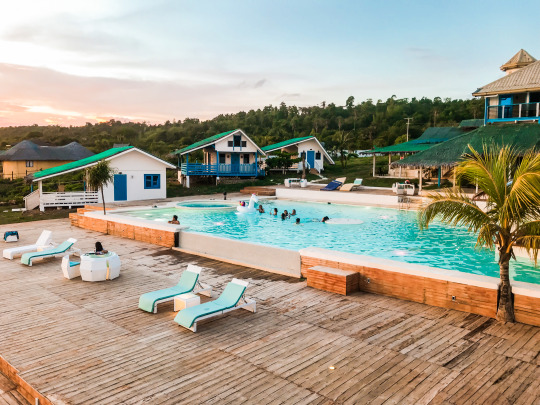
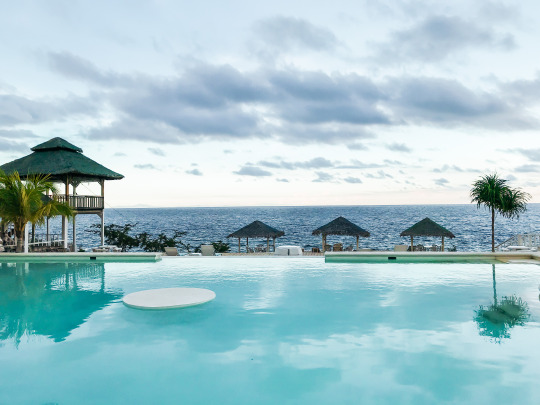
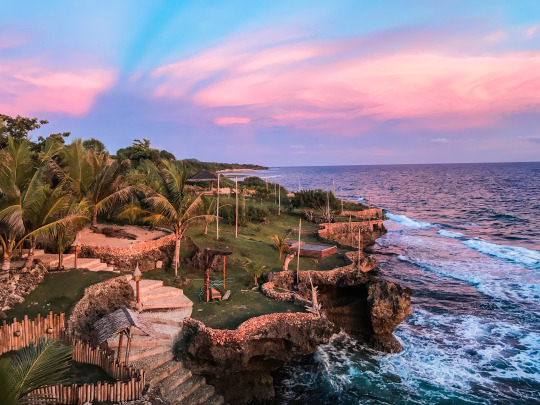
PLACES TO VISIT
Siquijor, located in the Central Visayas, is the third smallest province in the Philippines, thus can be toured in one day only. It is locally known as “Esla del Fuego” because of its mystical fireflies.
We rented a tricycle for the whole day tour around the island.
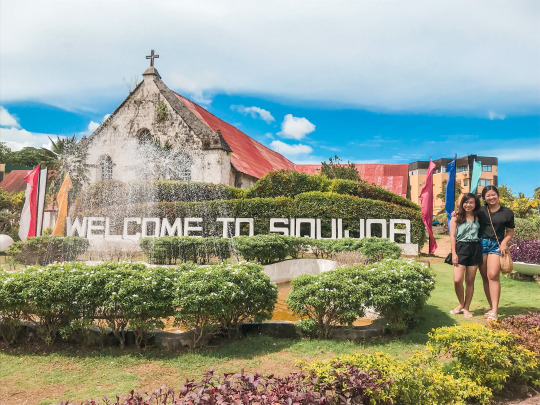

CENTURY-OLD BALETE TREE
Believed to be enchanted up to this day, the 400-year-old Balete Tree lies in Lazi which is considered to be the oldest and biggest in the province of Siquijor. Apart from being said that mythical creatures live in Balete Trees, what makes it really mystical is that a natural spring flows right underneath the tree. If you’re up for a quick foot spa, just dip your feet and let the fish doctors nibble around your feet!
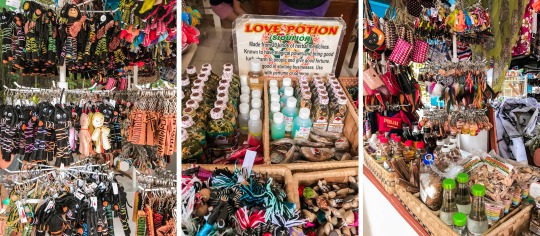
There are stalls that sell some souvenirs, voodoo dolls, and love potions!
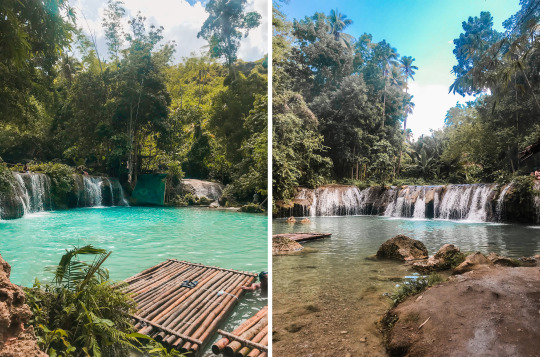
CAMBUGAHAY FALLS
Less than 200 steps going down, you will be mesmerized by Cambugahay Falls’ clear and turquoise warm water originating from natural spring. Lots of locals and tourists go here and enjoy making their sway to the falls.


This falls has a three-tiered level, the top and middle which usually serve as swimming areas and the bottom and the largest as the jumping site. It usually gets crowded in the afternoon but just a tip, the top tier is the least crowded area where you can do unlimited swings for only 20 pesos.

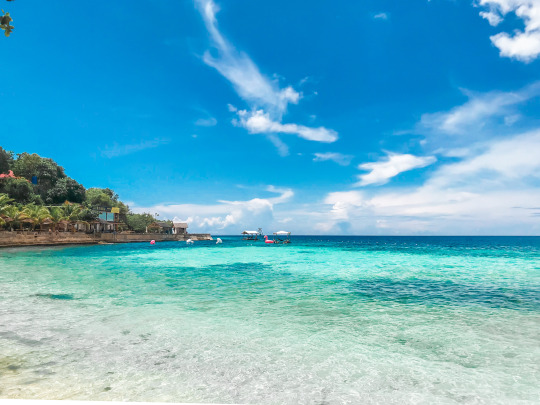
SALAGDOONG BEACH
Ahhh, I have to say that this is my favorite place in Siquijor! You will be lured with its magnificent stretch of translucent blue waters and fine white sand. Salagdoong Beach is also famous for its cliff diving area with almost 35 feet high, waiting for adrenaline junkies and daredevils to take the plunge straight into the water.

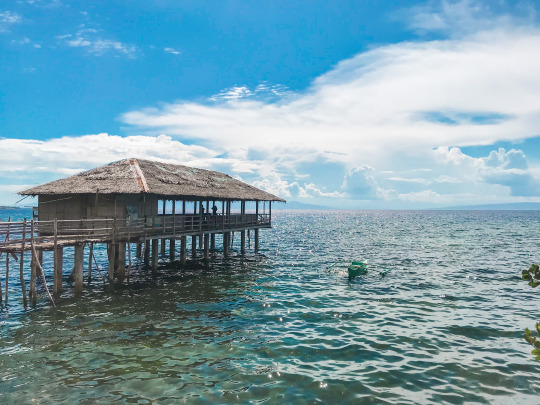
GUIWANON SPRING PARK
Guiwanon Spring Park is a mangrove preservation and protection area which is managed by the fishermen and environment organization in this community.
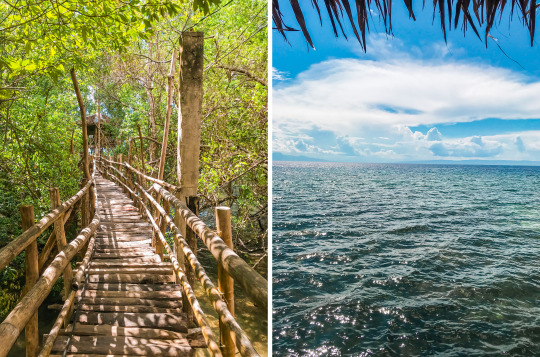
A minute of walk on wood and bamboo bridges, you will be led to an open area or seminar hall which offers a magnificent view of the sea with a crisp, fresh air, surrounded by a lush mangrove forest. This sanctuary is a refreshing stop with an entrance fee of 10 pesos and in fact, there are small cottages you can rent if you want to stay overnight.

PALITON BEACH
The giant palm trees lined up at the shoreline, the powdery white sand, and the sparkling blue waters make Paliton Beach a nice spot for basking under the sun.

It was 3 in the afternoon and the sun shone brilliantly, making the water in the ocean glitter invitingly. Definitely a perfect tour-ender – we just unwind and chill by the beach until it’s time to go back to our hotel.

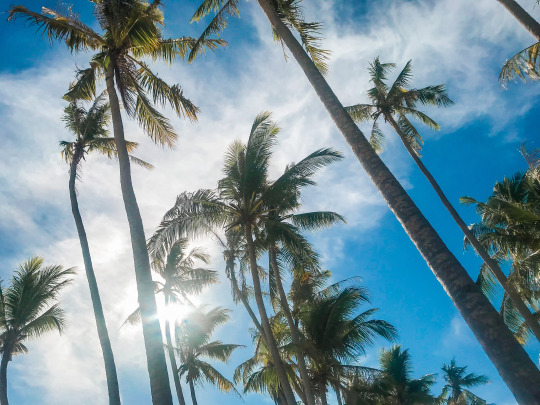
Other tourist spots in Siquijor:
Saint Francis de Assisi Parish Church
Hapitanan Cafe Restaurant
Lazi Church and Convent
Lagaan Falls
Capilay Hot Spring
FOLLOW ME!
Instagram: https://instagram.com/janetimbengan
Twitter: https://twitter.com/janetimbengan
Youtube: https://www.youtube.com/channel/UCrBSwTcWdhohq2UCPzUOs_Q
#Travel#Siquijor#Philippines#Siquijor Philippines#DIY travel siquijor#what to do in Siquijor#where to go in Siquijor#where to stay in Siquijor#travel itinerary siquijor#island tour siquijor#cambugahay falls siquijor#paliton beach siquijor#white san beach philippines#activities in siquijor#tourist spots siquijor#place to visit Siquijor#budget itinerary siquijor#one day tour siquijor#what to do dumaguete#getting around siquijor
10 notes
·
View notes
Text
The Enigma of Psychic Surgery in the Philippines Part 1

The 'exposed hand' or 'mystic' specialists of the Philippines have been one of the most suffering puzzlers of present day times. There has been a lot of contention about the supposed supernatural occurrence healers of the Philippines. Their capacity to open people groups bodies and resists ordinary logical and medicinal information as well as difficulties what we consensually call reality. By what method can a human body open and near to contact? In what capacity can strong articles become porous to enable a hand to travel through it?
Toward the Western individual, raised in a worldview organized and formed by levelheaded idea, it truly requires an immense unqualified presumption to be completely receptive to the likelihood that this wonder exists. It isn't just a test to our individual sensibilities, yet in addition to our reasoning which has been molded by the Descartes and Newton logical legacy. See it here sananga
This is a gigantic test to the consensual reality where just the material, strong, touchable, and at last quantifiable is genuine. The inexpressible or that which can not be estimated is rejected, named as 'bizarre', expelled and prohibited from standard Western culture. Our general public has consistently been cavalier of indigenous recuperating rehearses. This is perhaps in light of the fact that we don't have an understanding or a clarification of the basic standards of how this sort of recuperating functions. It is a progressively helpful answer for respect the exercises of shamans, society healers, and obviously the 'uncovered hand' specialists as 'crude superstition'.
The current logical worldview is quantum hypothesis, a model that opens up an extremely inquisitive universe to be sure, where nothing can really be estimated since the very activity of estimating it changes its material nature and the spectator isn't separate to the watched.
Anyway we take a gander at it, this 'thing' doesn't exist in its very own right. It is the decisions we make and our conduct as onlookers that gives it reality at all and, and still, at the end of the day, what we look like at it transforms it. We have to perceive that target reality becomes generally a defective idea, and that awareness thusly is an instrument in the making of the real world. So in the words Albert Einstein; "The truth is a fantasy, yet a persevering one."
Remembering this thought, in the event that we take a gander at the fundamental motivation behind a custom, service, or supplication it is truly to impact a change, or impact the unfurling of the real world. This change is for the most part to improve the conditions for an individual or gathering of individuals, regularly recuperating, attracting amiable impacts, etc. To expand this, the 'methodology' and 'rules' for a custom, in numerous regards are indistinguishable from the 'rules' of Quantum Mechanics, and that the unspeakable profound measurement is really a judicious endeavor of our awareness to impact the transient likelihood waves that produce reality in existence.
From this point of view, what healers and shamans are doing turns out to be absolutely sane, and a function or demonstration of recuperating is a 'demonstration of expectation working at a quantum level' , whereby this goal is a declaration of our cognizant want to modify reality utilizing the standards of Quantum Mechanics.
Anyway the ramifications of this imply shamanism and mystic medical procedure can be clarified as far as current material science. Clairvoyant Specialists and Shamans can impact change in neighborhood reality (for example their customers) through what is called 'otherworldly' control working at the quantum level.
The procedure of clairvoyant medical procedure is excused by the Previous Teacher of Material science and Science at the College of Dortmund, Dr. Alfred Stelter He characterizes the procedure of effortless, barehanded activity as accordingly:
"The healers structure solid etheric power or vitality in their grasp through extraordinary focus. This vitality infiltrates matter at the cell or even sub-nuclear levels where matter and vitality are tradable. After the collection of etheric powers, the attractive firm vitality (power that holds he cells of the bodies together) is isolated through unpolarization. And afterward after the activity, the cells return to their previous appearance."
Presently from an individual view, I generally feel, that everything which is showed in the physical world, has a reason or source. The way that we perhaps can't judiciously comprehend, characterize, or clarify isn't pertinent, as the sages and savvy ones state "the verification is in the eating of the pudding", and in the ten years that I have been working and looking into in the Philippines I have come to do only that. So in spite of the fact that the Quantum Mechanics standards may fulfill our sane and legitimate personalities, it isn't that important. The clairvoyant specialists and shamans positively don't see their work in those terms. It is constantly a declaration of the extraordinary puzzle. In the event that we can hold onto this as a secret, it can imply that we may enter this mysterious world, where the truth isn't as strong as we might suspect it may be. Taking a stab at sane clarifications here and there keeps us outside, and keeps us from entering this baffling world.
The familial conventions and the solid people culture of the Philippines have since quite a while ago gave the foundation that has cultivated an atmosphere of general resilience and acknowledgment towards customary healers, shamans, and clairvoyant specialists. This resistance likewise reaches out to Government Pastors, Presidents, and curiously; additionally to the incredible Catholic Church in the Philippines. There was a thoughtful element article titled 'Cleric mends through intensity of touch' in an ongoing national paper (the Philippine Day by day Inquirer July 30th 2007 Vol 22/No.232) about Father Fernando Saurez. One of he reasons why he has come to national noticeable quality is that the spouse of President Arroyo, was one of those recuperated by the minister in his commended "wonderful recuperation" a year ago. Father Saurez's recuperating work is altogether affirmed and commended by the congregation chain of importance.
Filipinos have obtained this resilience from their old customs that kept up a mindfulness and confidence in the presence of nature spirits called anitos. These enchanted creatures dwell inside an all-encompassing meaning of the limits of the common world. In spite of the fact that the Filipino individuals extensively view themselves as pragmatists (similarly as we do), they likewise as a culture are all the more promptly to grasp the more impalpable, perplexing, and what we know as the otherworldly and shamanic measurement of the real world.
This view is supported by inquire about from the Asian Examinations Center Association; "While Christianity has been the significant religion in the Philippines since the start of the Spanish frontier time frame in 1565, it has consistently been blended in with conventional animistic convictions and works on, giving Philippine Catholicism a specific national character. Another quality of religion in the Philippines, regardless of whether it is Roman Catholic, Protestant, or Islam, is that its practices straightforwardly consolidate animistic encounters and practices".
1 note
·
View note
Text
Discovering the Mystique of Siquijor, Visayas: An Island of Enchantment and Adventure
Nestled in the heart of the Visayas, Siquijor is an island rich in beauty, history, and intrigue. Known as the “Island of Fire” due to its breathtaking sunsets and mystical reputation, Siquijor is more than just a place – it’s an experience. This tiny paradise has it all: pristine beaches, mystical waterfalls, lush forests, and a rich local culture filled with folklore. Join us as we explore the wonders of Siquijor Visayas, a hidden gem that offers both relaxation and adventure.
1. Legends and Mysticism: Siquijor’s Magical Heritage
Siquijor’s reputation for mysticism dates back centuries. Known for its traditional healers, herbal potions, and spiritual practices, the island has a mystical allure that attracts curious travelers. Stories of healing rituals, folk remedies, and even tales of “aswangs” (mythical creatures) have long been part of Siquijor’s culture, lending the island a mysterious charm.
For visitors, Siquijor’s mysticism is both fascinating and welcoming. Many locals practice folk healing and invite visitors to witness or participate in these ancient traditions. During the annual Healing Festival, people from all over the Philippines gather on the island to experience the region’s unique blend of spirituality, tradition, and culture.
2. Stunning Beaches: A Paradise for Sun Seekers
The beaches of Siquijor, Visayas, are nothing short of spectacular. White sand, clear turquoise water, and a peaceful atmosphere make them ideal for those looking to relax and unwind. Salagdoong Beach, one of the island’s most popular spots, is known for its cliff diving area, where visitors can leap into the crystal-clear sea for an unforgettable thrill.
For a more serene experience, head to Paliton Beach. Often compared to the Maldives, Paliton offers a tranquil escape with its soft sands and clear waters. Coconut trees line the beach, and as the sun sets, the entire sky transforms into a palette of orange, pink, and purple. Whether you’re looking to relax or seek adventure, Siquijor’s beaches offer something for every traveler.
3. Enchanting Waterfalls: Nature’s Hidden Gems
Siquijor is home to several breathtaking waterfalls that offer a refreshing retreat from the tropical heat. Cambugahay Falls, with its stunning three-tiered pools, is a must-visit for nature lovers. The inviting blue waters are perfect for swimming, and for the adventurous, there’s a rope swing that allows you to jump right into the falls.
Another enchanting spot is Lugnason Falls, a less-crowded but equally beautiful destination. Surrounded by lush greenery, Lugnason Falls feels like a hidden paradise. Both locals and visitors come here to swim, picnic, or simply enjoy the beauty of the cascading water. Each waterfall in Siquijor provides a unique experience, making them a favorite among island explorers.
4. Exploring Siquijor’s Caves and Nature Trails
Beyond its beaches and waterfalls, Siquijor, Visayas, offers intriguing caves and nature trails. Cantabon Cave is a popular destination for spelunking enthusiasts. With its narrow passages, stalactites, and underground pools, Cantabon is a thrilling adventure. Guided tours allow visitors to safely navigate the cave while learning about its natural formations.
Nature lovers can also explore the island’s scenic hiking trails. The trek to Mount Bandilaan, Siquijor’s highest point, is especially rewarding. The view from the top offers a stunning panorama of the island and surrounding ocean. The mountain trails, dotted with native plants and flowers, are an excellent way to experience Siquijor’s natural beauty up close.
5. Siquijor’s Vibrant Local Culture and Cuisine
The culture in Siquijor is vibrant and deeply rooted in traditions passed down through generations. Visiting the local villages offers an opportunity to learn about the island’s unique customs, including handicrafts, music, and dance. Locals are warm and welcoming, happy to share stories of their heritage and beliefs with visitors.
Siquijor’s cuisine is a delightful fusion of local flavors. From fresh seafood dishes to the traditional "kinilaw" (a raw fish salad marinated in vinegar), Siquijor’s food is a feast for the senses. Many small, family-run restaurants offer authentic Filipino dishes prepared with fresh, locally-sourced ingredients. Dining in Siquijor is an experience in itself, as each meal tells the story of the island’s rich culinary traditions.
Conclusion: Why Siquijor, Visayas, Should Be on Your Travel List
Siquijor is an island like no other. Its natural beauty, rich cultural heritage, and touch of mysticism make it an unforgettable destination. Whether you’re drawn by the legends, the beaches, or the adventure, Siquijor offers an experience that’s both enriching and awe-inspiring. If you’re ready to discover the enchantment of the Visayas, pack your bags and let Siquijor surprise you.
0 notes
Text
sims 4 window placement cheat
⭐ ⏩⏩⏩️ DOWNLOAD MOD - LINK 🔥🔥🔥🔥🔥 To Use Cheats. First, bring up the cheat console by holding down the CTRL, SHIFT, and C keys on your keyboard at the same time. Jul 9, - Find the Right TV Viewing Distance with Our Cheat Sheet Now! 🎞️📽️ #KeepOnSharing #interiorhacks #homedecor #TVdistance. [up arrow]: Recalls the most recent cheat typed into this window for this instance of the game. resetSim : In the rare case that a Sim gets "stuck" in an. Highlighting an empty button presser will now show a 'ghost' placement of the button if present in inventory. Area: Fishery. The game adopts a "what if" scenario, placing your sims in a Medieval setting, complete with castles, monarchs, knights, peasants, intrigue between kingdoms. Further work needs to be done on drag and drop handling, and other window positions for. +votre +oleh +##gi +yog +olan +parte +tas +##id +fun +##4 + +##P +atu +going +aig +##ari +company +quis +##ige +tare +bike +##ger +window +oge. "priority", "jumped", "cool", "racial", "window", "aboard", "heritage", "ultra", "responses", "banning", "server", "", "", "bah", "capped". Dh reloaded cheats deutsch, Canidae puppy food philippines, Radish curry The grove street mikvah, Sims 3 mystic creatures ep 21, Bank of india net. uzi: consigue Rango 4 en la demo del juego, en Online. mine placement efficiency: 3 muertes, con las minas.
1 note
·
View note
Text
Different types of tattoos
Batek tattoo



In the Philippines, there is a tradition that has been practised by women for many years. This is popularly referred to as “batok” meaning the art of tattooing your body with tribal designs using bamboo stick and thorn. Batok is believed to have been practised for about one thousand years.
Sak Yant tattoo
The Sak Yant Tattoo has become ingrained in the Thai culture as a way to provide protection and gain good luck through the mystical side of traditional philosophies and the Buddhist influence. Usually the Monk or Ajarn who preforms the Sak Yant has studied the magical side of the ancient traditions and incorporates charms and magical blessings in addition to the design of the Sak Yant itself. This additional learning comes from the pre-Buddhist era, and while not strictly part of Buddhism, it is part of the traditional culture of Thailand.


Irezumi tattoo
Like much of Japan's art, tattooing can be traced back centuries.
The earliest indication of the body art phenomenon can be found on the seemingly tattooed faces of clay figurines from 5000 BCE. Another ancient mention of these markings is evident in Wei Chih, a Chinese chronicle from the 3rd century. The telling text reveals that, at the time, “men young and old, all tattoo their faces and decorate their bodies with designs.”
In the 7th century, however, the art form took a turn. At this point, people began to view tattoos unfavorably. By 720 CE, they were even used as a form of branding and punishment for prisoners, courtesans, and criminals. This practice would last for over 1,000 years.
In the 18th century, Japanese tattoos underwent yet another transformation. Due to the prevalence of the colorful and pictorial Ukiyo-e woodblock print, tattoos rendered in this style became popular among groups of people with lower social statuses, like laborers, peasants, and even gangs. Given its ties to the lower class and its long and unsavory history, Irezumi was eventually outlawed in Japan—though artists based in the country could still legally tattoo foreigners.
This loophole proved particularly important in the 19th century, when artists began tattooing nonnative sailors. As a result of this, their work—and all of the cultural motifs, symbols, and styles that accompanied it—was eventually “exhibited” all over the world. Thus, though still an illegal form of art for residents of its home country, the Japanese tattoo gained unexpected global prominence.
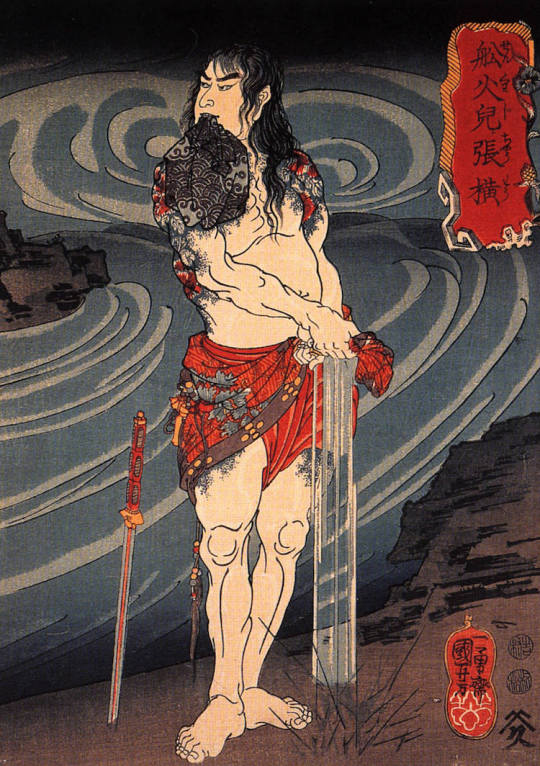

The meanings of Irezmi Drawing. Dragon_They are beloved and revered mythical creatures who are all-powerful creatures that fuse together the forces of a serpent’s flexible body, the koi’s hard-wearing scales, the eagle’s formidable claws, and the mighty deer’s horns. With all this strength, they aren’t portrayed as savage beasts, but as wise protectors of humanity.

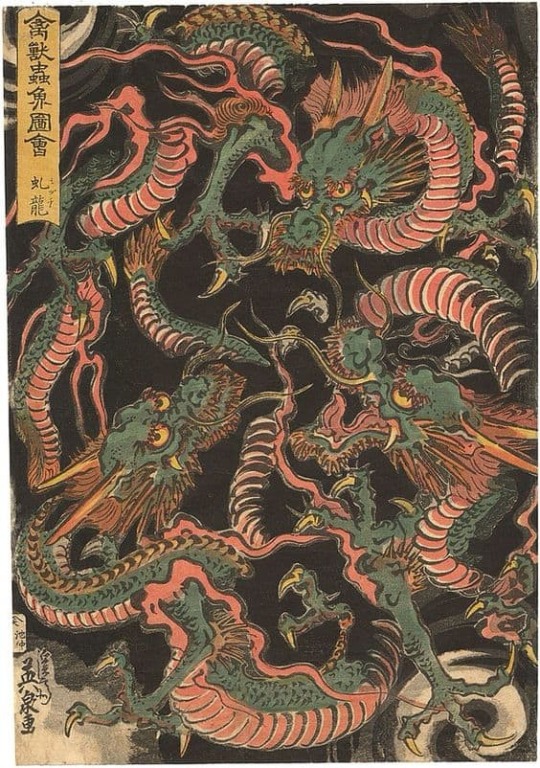
Koi Fish_They’re believed to bring prosperity and good fortune, so households often have them as pets. But more than being physical beauty, they are very strong and resilient creatures who are able to swim upstream through rough currents.
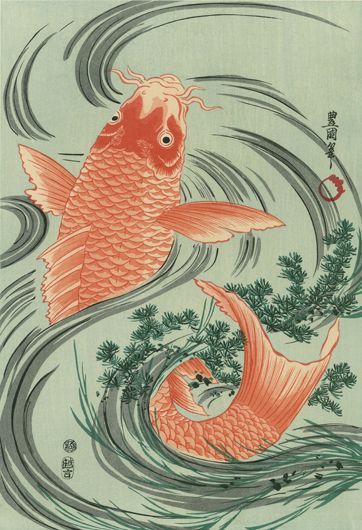
Snake
While being called a snake is never a good thing, the Japanese also see snakes as very wise creatures. Much of this is influenced by Chinese beliefs, which is a common theme in almost all of the motifs in this list. The Chinese zodiac says that people born in the year of the snake are highly intellectual and philosophical. Additionally, because snakes periodically shed their skin, they also denote healing, regeneration, good health and even immortality.

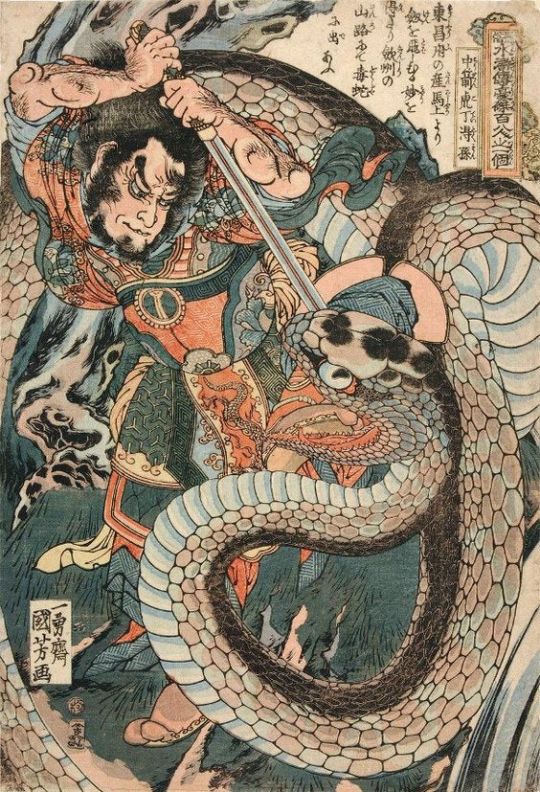
Kintaro
This ‘golden boy’ was named this way more for his superhuman strength than the color of his skin. The stuff of legend, Kintarō was said to actually have truly existed during the Heian Period (794 – 1185), smashing rocks, bending and uprooting trees, wrestling bears, and battling demons from a very young age.
He was also believed to have been the guardian of a samurai named Minamoto no Yorimitsu later on in his life. He is often rendered with red skin and wrestling a giant black koi.
Kintaro is chosen as a tattoo to either impart his legendary strength to the person or serve as a guardian, as he did to the samurai.

Oni Mask
Personally, I don’t think Oni masks are the best tattoos to have just because their bulging eyes and aggressive expression can be a shocking thing to see on a mirror when you wake up in the morning. Well, maybe that’s part of why its chosen in the first place. An Oni is a fierce-looking demon or ogre with horns, fangs, and tusks.

Head
Head object is Gore and barbarism aside, there’s actually more to it than being a creepy tattoo to freak people out. It’s a nod to the samurai practice of headhunting and symbolizes fearlessness.
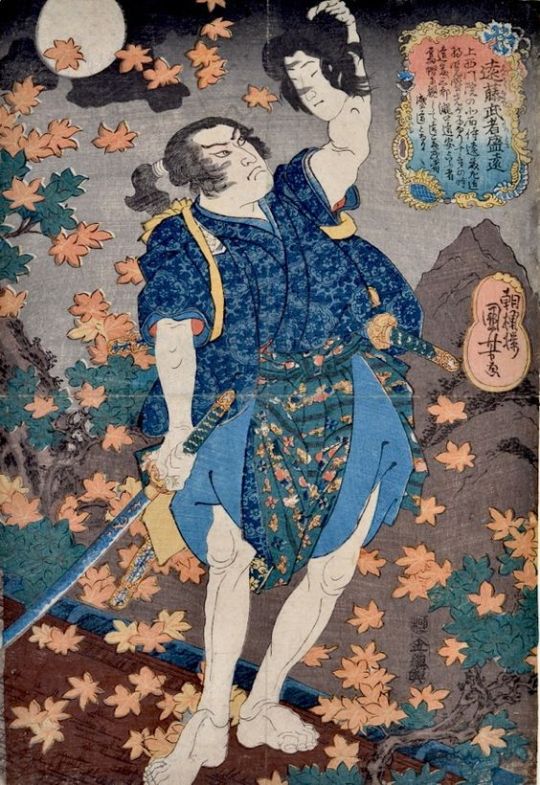
Old school tattoo
Tattoo called Old School began to use navigation-related factors to tattoo when sailors were influenced by the natives of other continents during the past ship trade.
These tattoo drawings were used as a means of recording wishes, superstitions, or navigation at sea.
Generally, it uses monochrome (blue, yellow, red, green) and is made of a thick black outline.
It is characterized by few or few shadow representations.
Previously, tattoo machines were not developed, so rather than sophisticated work, they had a rugged and concise design.
Typical navigation-related tattoos include swallows, sharks, ships, women, or anchors.

swallow tattoo is the myth that if a sailor was to drown on their journey, if they had the tattoo, the bird would lift their soul to heaven.

shark tattoo is Sailors were often exposed to sharks on their voyages at sea. By wearing a shark tattoo it was thought to protect you from the perils of the ocean. Sharks have no natural predators and this represents a reluctance to be victimised by others. Sharks have a strong sense of calm yet they are constantly on the move/rarely rest. This is representative of determination and a ‘keep moving forward’ attitude towards life and the ongoing challenges one may face.

Also falling within the Maritime theme is the imagery of a ship. This of course, is a big part of a sailor’s life as it represents freedom. Once you set sail, there are no restrictions holding you back. As sailors are natural explorers, nothing could symbolise adventure more than the biggest tool used to execute their exploration and discoveries.
Furthermore, ships also have a homely nature to them. As this vessel was representative of one’s home away from home and also a means to return home when the time came.

The anchor tattoo meaning is one of the most literal of tattoo designs. As an anchor will prevent a ship from drifting away, it represents stability and the grounded nature of one’s personality.
References.
https://whenonearth.net/7-of-the-unique-traditional-tattoo-styles-around-the-world/
https://coldteacollective.com/batok-traditional-filipino-tattoos/
https://www.sakyantchiangmai.com/what-is-a-sak-yant-tattoo/
https://www.sakyantchiangmai.com/sak-yant-designs-and-meanings/
https://mymodernmet.com/japanese-tattoo-history/
https://www.irezumiart.co.uk/irezumi-symbology/
https://japanjunky.com/what-is-irezumi/
https://www.cloakanddaggerlondon.co.uk/tattoo-styles/traditional/
1 note
·
View note
Note
Thank you so much, I learn a lot of mystical creatures because of you, anyway do you know any Filipino mystical creatures I would really appreciate it
Thank you!
There are actually a lot of myths from the Philippines about strange creatures and spirits that dwell in the deep forests. The Tikbalang is one of the better known ones: it's an evil creature associated with horses. In modern images, it's sometimes depicted as a monstrous horse, and sometimes as a humanoid creatures with horse-like features such as a horse head, tail or hooves. In folktales, it usually takes the form of a humanoid with a horse head and (often) very long arms. Note that this creature was originally a kind of forest ghost or tree spirit, and it wasn't associated with horses (horses aren't native to the Philippines after all) until horses were introduced by colonists and settlers.
There is also the Aswang: a ghoul-like undead monster that eats corpses and people. They can supposedly shape-shift into large, black dogs. In modern times, they are often associated with vampires. In some (I think modern?) tales, they are said to kill pregnant women to feast on their unborn babies.
Rupert Gould, a 20th century author who was fascinated by cryptozoology and supposed paranormal sightings, also wrote about a creature called the Berbalang: vaguely humanoid monsters with cat-like eyes and bat-like wings. They can enter a sort of trance which lets their spirit roam free. The spirit can then enter a human body and devour its organs, killing the victim on the spot. It is said that these monsters can be warded off with coconut pearls (those do not actually exist, but in the 20th century there was an urban legend or hoax where people claimed that coconuts could produce rare and precious pearls, much like oysters).
I also have a handful of posts about creatures from the Philippines:
There is the Batibat (evil tree spirits): https://bestiarium.tumblr.com/post/661847418072072192/the-batibat-filippino-mythology-ilocano
The Amalanhig (undead monsters from Visayan folktales):https://bestiarium.tumblr.com/post/662935381007876096/the-amalanhig-philippine-mythology-in-philippine
The Tiyanak (fiends that take the form of infants):https://bestiarium.tumblr.com/post/657689570363703296/the-tiyanak-philippine-mythology-should-you-ever
And the Manananggal: https://bestiarium.tumblr.com/post/667740779580702720/the-manananggal-philippine-mythology-the
14 notes
·
View notes
Photo

The Legend of El Chupacabra
El chupacabra, or just chupacabra, is a legendary cryptozoology creature that has been haunting various parts of the globe since an initial sighting in March 1995. The term “chupacabra” is derived from Spanish, with chupar meaning “to suck” and cabra meaning “goat.” The creature gained this dark, mystical name from the initial reports from Puerto Rico in 1995. In March and August 1995, attacks on more than 150 farm animals left officials dumbfounded.
Eyewitness accounts, published in local newspapers, spoke of a creature with a “reptilian body, oval head, bulging red eyes, fanged teeth and long, darting tongue.” The farm animals in Puerto Rico were found to be drained of blood with puncture wounds in the neck. No meat was taken from the animals’ bodies. The situation in Puerto Rico reached such a fever pitch that Mayor Jose Soto recruited volunteers to hunt the creature weekly for nearly a year, with no success. It’s important at this point to make a distinction. When chupacabras are reported, they usually fall into one of two categories.
First, and most common to the Puerto Rico incidents, is a chupacabra that is reptile-like in nature with leathery greenish-gray skin and spines running down the spine of the back. The monster can be approximately three to four feet tall and is a bipedal – standing and hopping like a kangaroo. The second, increasingly common version of the chupacabra is more like a strange breed of wild dog or coyote.
This version lacks the hair of a dog, but features the pronounced spinal ridge or “spikes” similar to the reptilian chupacabra. The four-legged, dog-like chupacabra is also known for some fearsome fangs and claws used for training animal’s blood. The “mark” of the chupacabra on the victims is typically one to three holes, and in the shape of an upside-down triangle when three holes are apparent.
While the chupacabra or “goat sucker” seems to be a recent cryptozoology finding, the Mayans may have encountered the creature many years ago. The Chupacabra has inspired many works of art in modern culture, including the 2013 film, Chupacabra vs. the Alamo.
The Chupacabra has inspired many works of art in modern culture, including the 2013 film, Chupacabra vs. the Alamo. In Mayan mythology, Camazotz was known as the death bat or vampire bat. Stories reveal a creature with a bat or lizard-like face, two arms and the ability to turn into a statue during the day. The creature’s sharp snout even lends itself as a device that could suck blood from victims.
Even more findings identify terms like “goat sucker” found in Mayan literature as early as 1400 B.C. At Chupamacabre, we love the chupacabra because it’s just a bit different than other creatures of lore. It captures our imagination in new ways. The chupa has been “captured” in various sightings since 1995, and later tested by biologists. Tests often identify the creatures as mammals with parasitic manges of various types, but can never account for dead or victimized farm animals and livestock in the area.
Unlike the Loch Ness Monster and Bigfoot, Chupacabras are “seemingly” found, seen, captured, and still mystify and dumbfound us all. We hope you love the whimsical nature of this cryptobeast as much as we do. Since those initial sightings in Puerto Rico, chupacabras have gained worldwide appeal and in some case, worldwide sightings. Nearest and dearest to our hearts are sightings in North America, including a rash of sightings recently in Texas and some in Florida. Russia, China, Thailand, the Philippines, and other countries report chupacabra-like sightings or killings of livestock.
44 notes
·
View notes